Writing Children's Fiction
 When you read to a child, you’re planting the seed for their imagination.
When you read to a child, you’re planting the seed for their imagination.
We fiction writers have to write about things that have never happened to us, and we have to make them believable. Sometimes we need to write about emotions we’ve never felt.
Actors have to use a technique called method acting.
In method acting an actor has to remember an event or feeling in his own life that are similar to what his character is going through.
As a writer, you can use these similar experiences to build your character. You can be a method writer.
With children’s fiction picture books, they communicate through pictures and words, or sometimes through pictures alone. For a picture book to be understood by a child, you must know how to communicate clearly.
What I’m about to share with you on this website might be different from what other’s might have taught you. A lot of what I share comes from reading a lot of books on the subject of ‘How to Write Children’s Books,’ and a lot of the information I have learned through the writing process itself.
One thing I highly recommend is joining a writer’s critique group. It’s important to have other writer’s review your work. They are your first-time reader, and they can help you with crafting your story.
What I mean by that is, we get so involved writing our story and focusing on our characters, what seems obvious to us in our mind (the writer) may not be so obvious to the reader. We may have missed out some important details.
A mistake beginner writers often make is the ‘Trigger then Response’ way of writing. What I mean by that is often, in the beginning, we put the cart before the horse so to speak. The Trigger and Respond method are showing our readers in order in which they play out. Example: An icicle dropped at Magan’s feet. She leaped back in horror.
The icicle dropping at Magan’s feet is the trigger event. The leaping back is the response. To the reader, this makes sense, because one flows naturally from the other. This allows the reader to experience the story as it unfolds.
The content on this site is what I use as a reference when I write my stories; it refreshes my memory as to the correct steps to writing good Children’s Fiction and especially story structure.
Your Main Character in Your Story
Your main character doesn’t have to be a shining example of good behavior in order for us (the reader or listener) to care about him/her. It would most likely be boring if he/she were perfect. They can have lots of faults because no one is perfect. NO ONE!
Make sure your character is NOT evil. He/she has to mean well underneath their rough, tough exterior. They also have to be vulnerable. If they are a superhero and nothing can harm him, then your reader will most likely not worry about them. There has to be at least one way they can be hurt. Even Superman is in danger from Kryptonite.
Be doubly cruel. Make your reader like your heroine, so the reader suffers when she does.
So be cruel. Make your hero suffer!
So, give your main character a problem that the reader or listener will identify with.
How to Write a Children’s Book.
Read more about the main character…

